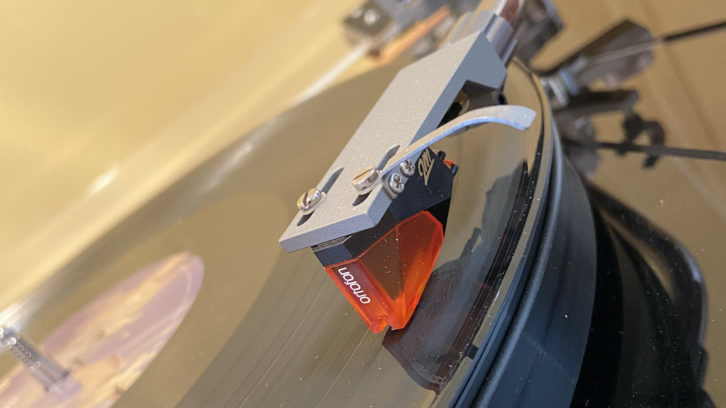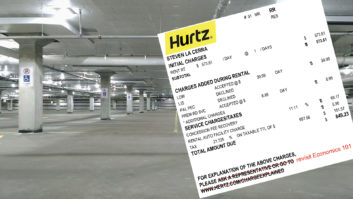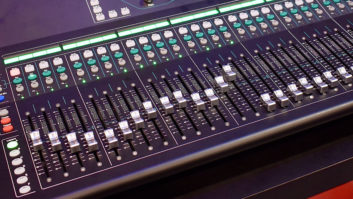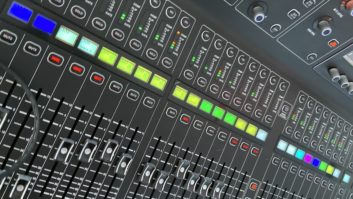
Last year—for the first time in 30 years—sales of vinyl records exceeded those of CDs in the U.S. Vinyl accounted for 38 percent of total album sales (physical and digital formats combined), which translates to 42 million of the roughly 109 million units sold, according to MRC Data.
It marks the 16th consecutive year in which sales of vinyl albums has increased—a far cry from the “vinyl is dead” cries we heard not that long ago. Top selling titles include 30 (Adele, 318,000 units), Sour (Olivia Rodrigo, 268,000), Red (Taylor’s Version) (Taylor Swift, 260,000), Purple Rain (Prince and The Revolution, 207,000), and Abbey Road (The Beatles, 201,000).
Sales of vinyl records in the UK were equally impressive in 2021: ABBA’s Voyage sold 40,000 copies, and it wasn’t released until November. Close on the heels of Voyager were 30, Rumors (Fleetwood Mac), = (Ed Sheeran), Back to Black (Amy Winehouse), and Nevermind (Nirvana). In fact, more than 5 million vinyl records were sold in the UK in 2021, the highest total number since 1990.
All good numbers, although those of us who paid attention to record sales in the ’80s and ’90s clearly recall when a successful artist could sell those numbers in a week.
Birth of the Bootlegs—Part 1: The First Bootleg Record
What’s going on here? Why are people coming back to a dead format?
It certainly isn’t for convenience. Last time I tried listening to a vinyl record in my car, it didn’t work out very well (don’t laugh too hard; there actually were record players designed for use in automobiles in the 1950s, before cassette or 8-track tapes were invented). Any DJ who’s been spinning discs for more than 20 years can tell you about the backaches they’ve had from dragging their “software” from gig to gig. Storing vinyl records takes up significant space when compared to a hard drive or thumb drive, either of which can easily store and transport tens (if not hundreds) of thousands of songs. Last time I checked, you can’t play vinyl records using your phone, and buying music on vinyl is at least twice the cost of buying it in download form.
Audiophiles who are serious about listening to vinyl records go to great lengths to achieve a hi-fi listening experience. It starts with tracking down the best pressing of a particular release, continues with cleaning that disc, and then moves on to the hardware. Your average $150 DVD/CD player typically outperforms a turntable at the same price point, but those lucky enough to be able drop serious cash on a turntable, cartridge and phono preamp—upward of a few thousand bucks—are in for a serious treat.
Maybe people buy vinyl records because you can enjoy the artwork when it’s in a 12×12-inch format. You might even be able to read the typeface for the credits! Or maybe it’s because playing vinyl is more interactive. You have to do more than just press Play, and you’ll have to get up off your chair after about 20 minutes to flip it over.
None of those reasons explain why a person in their teens or early 20s buys vinyl. It could be that they’ve found their parents’ collection in the attic, and have started discovering “new” music (many of my students tell such stories), or their parents have a killer stereo system. I’d like to think the latter is part of it, and that people appreciate good sound. I’d also like to think that people actively listen to vinyl, as opposed to just playing music on their phones while doing the laundry. Not that there’s anything wrong with that.
One thing that vinyl has going for it is that it’s a tried-and-true format. At this point, the 12-inch, 33-1/3 RPM LP is pushing 75 years of age. You can still play them, no matter how old they are. Heck, you can still play 78s. There won’t be any issues with file compatibility, no concern about operating systems or sample rates.
They’re solid. They’re collectible. It’s fun to browse the used bins in a record shop. And once you own an album on vinyl, it’s yours until you pass it on to the next generation of listeners.







